Vivobarefoot Review
We’ve talked a lot recently about minimal shoes – how they came about, and what really makes a shoe ‘minimal’ or not. If you missed those recent articles, you can find them here:
One of the companies that we contacted for those articles is called Vivobarefoot. Who are they, and what do they do? In their own words:
“In 2003, Vivobarefoot became a pioneer of the barefoot movement by launching the first minimalist shoe with a patented, ultra thin puncture resistant sole that offered maximum sensory feedback and maximum protection. This was driven by the knowledge that 70% of your brain’s information for movement comes from the nerves on the soles of your feet. The more you can feel the ground, the greater your body’s understanding of its surroundings and natural movement.”
We’re not arguing for or against their claims, but clearly their product is aimed at those folks for whom less-is-more. Well, at least for their shoes.
In the past, I’d tried running in Vibram FiveFingers. I’ve run in racing flats, track spikes, sandals, tai chi shoes, and of course – lots of “normal” running shoes. A big part of my job is simply giving a lot of products the ol’ College Try. One brand I’d never tried, however, was Vivobarefoot. Let’s see how they shake out. Do they compare to other minimal offerings?
Specs and Design
The first pair of shoes I tried is called the Breatho Trail:
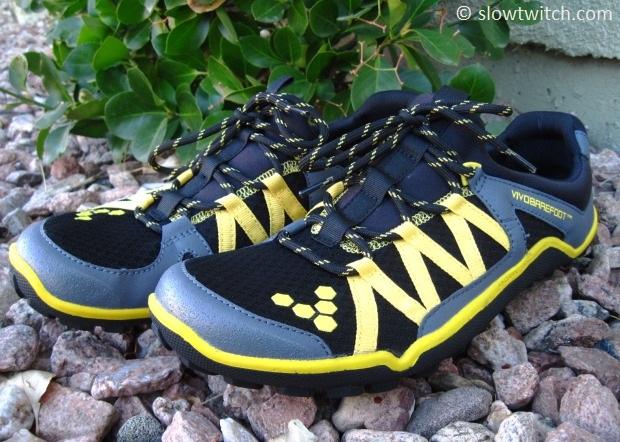
Vivobarefoot has a continuum of shoes, based on thickness and aggressiveness:
-On Road
-Multi Terrain
-Off Road
Regardless of style, ALL Vivobarefoot shoes feature a non-ramped sole (the heel and forefoot are the same height). The difference comes in the thickness of the midsole and outsole.
These shoes don’t really have a midsole and outsole as you’ve come to expect in your other shoes. With Vivobarefoot, there is just ‘the sole’, which they also call the ‘base’ of the shoe. The insole, however, is separate.
The Breatho qualifies as Off Road, and is considered to be the most aggressive Vivobarefoot shoe:
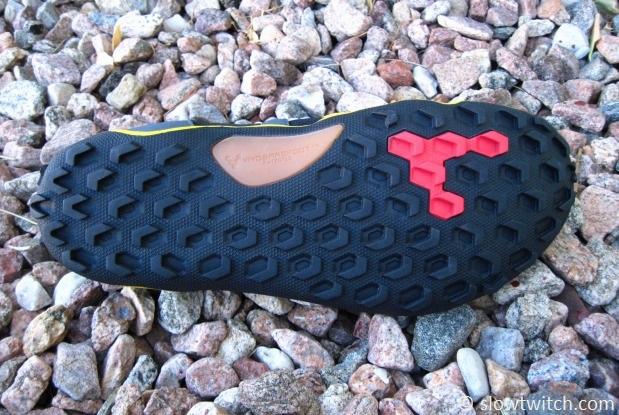
The Breatho has a 2.5mm base thickness, 4.5mm tread, and 3mm insole – for a total thickness of 10mm. Per our recently debuted ‘minimal’ specs, that total thickness just sneaks in as a true minimal shoe. Many of the minimal-shoe-lovers remove the insoles to reduce shoe height and weight, which is entirely possible with the Breatho:
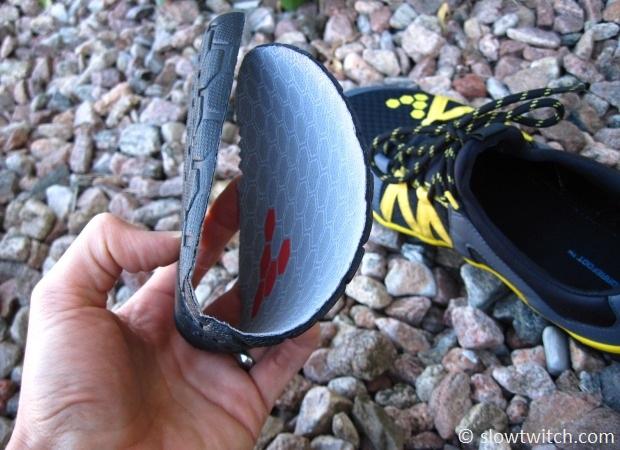
The 4.5mm tread certainly looks aggressive, but I found it to be barely noticeable while walking around.
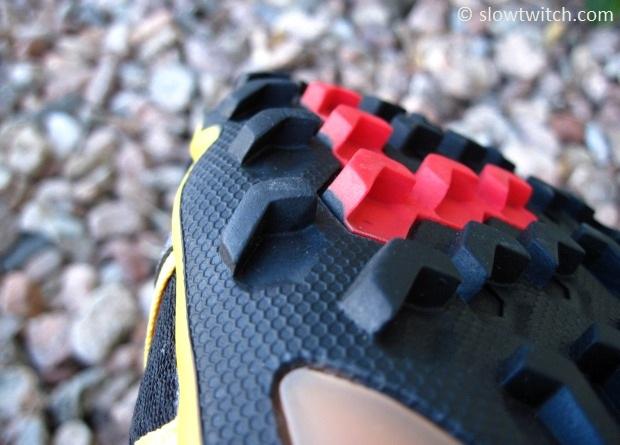
In comparison, the Aqua Lite is an ‘On Road’ shoe, with a 3mm sole and 3mm insole (6mm total thickness):
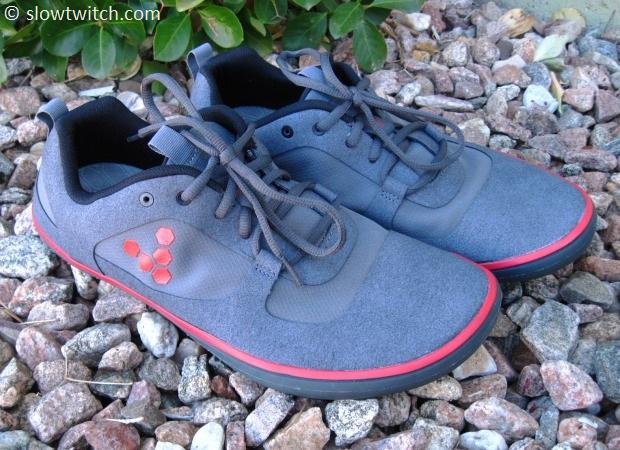
As you can see, the Aqua Lite is very thin and flexible:
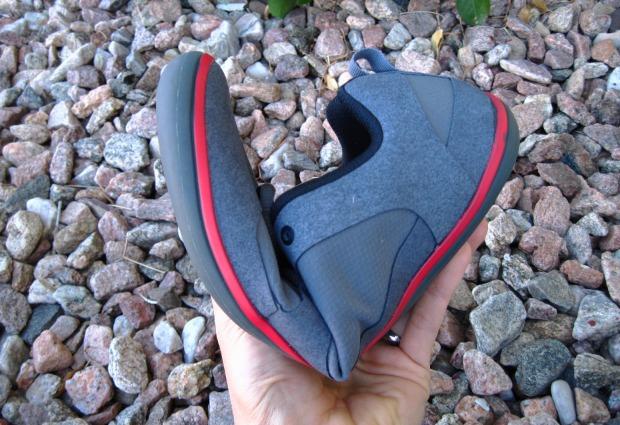
Despite the flexibility, I found that the puncture-resistant tread worked quite well. Yes, you still feel very sharp rocks, but they protect your feet much better than going full barefoot.
Both the Breatho and Aqua Lite definitely check all of the other boxes of what it takes to be a minimal shoe. They have no arch support, no posting, no foam to compress, and no rigid heel counter.
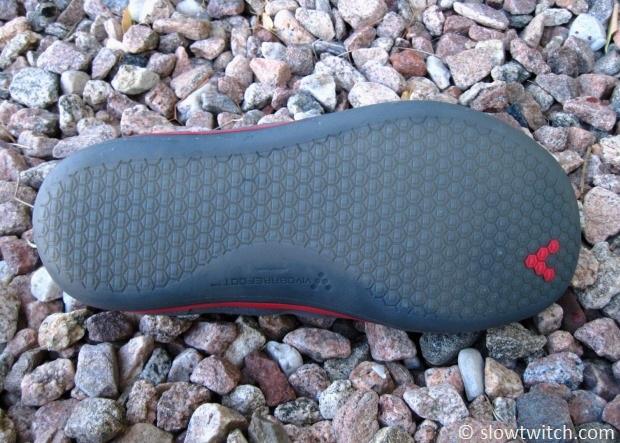
Fit and Feel
Vivobarefoot shoes come in European full sizes only. I normally wear an 11.5 in most brands of running shoes. In Vivobarefoot, that worked out to a 45 in the Aqua Lite, and 44 in the Breatho. Why the full size discrepancy? According to Vivobarefoot representatives, the Aqua Lite runs about ½ size smaller than their other shoes. The two models of shoe in two different sizes feel identical to me in terms of length and width.
Overall, my favorite attribute of these shoes is what shoe retailers call ‘Step-in Feel’, or ‘foot feel’. In that respect, Vivobarefoot knocked it out of the park. I always hesitate to write reviews that are “too” positive; it can always be perceived as biased because of advertising and the nature of publishing (are all negative reviews somehow inherently more honest?). I don’t know, but I will say two things: 1) Vivobarefoot does not advertise with Slowtwitch currently, and 2) These are the most comfortable shoes I’ve ever had on my feet. Full stop – that’s it. I really, really like them.
I will give the disclaimer that this is not my first time wearing minimal shoes, so my perception could be skewed by the fact that my feet are ‘ready’ for the shoes. What I found most interesting was that both pairs of Vivo shoes seem to do the impossible – offer good puncture protection, great ‘feel’, and somehow also feel cushioned and friendly. Whereas Vibram Five Fingers feel hard and harsh to me, the Vivos feel like pillows in comparison. Proprioception is a big part of their product story, and somehow their secret sauce allows ground feel and comfort at the same time. It’s almost like a much thinner non-ramped version of a Saucony Kinvara (one of my favorite shoes).
The only downside I found with the Breatho was the tongue system. Put simply, there is no tongue to speak of:
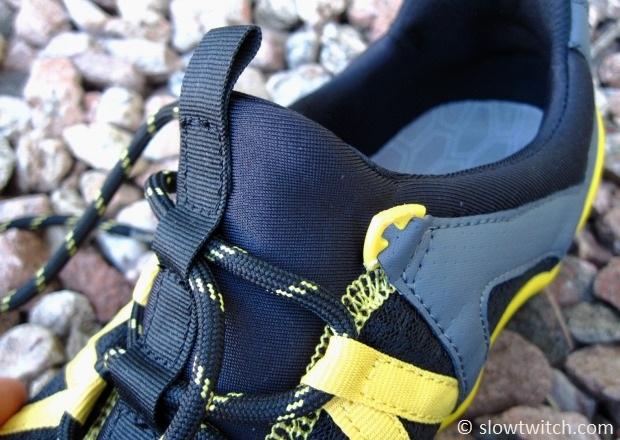
This made the shoes feel not quite as secure on my feet as the Aqua Lites. I felt like I couldn’t tighten them down as snugly, which seemed odd to me – since the Breatho is a trail shoe (where we presumably want a more secure fit).
The Aqua Lite, in comparison, has a semi-separate tongue that is sewn in to the main part of the upper. It is easier to tighten the laces, and the shoe feels more like a glove.
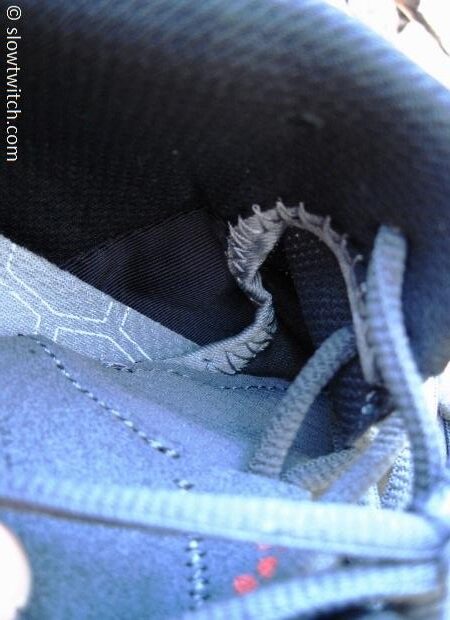
So – do you run in these things?
Do I really run in these shoes? Am I one of those crazy minimal guys? Yes, I do run in these shoes, and no, I’m not crazy. Even if you think that is a bad choice, wouldn’t you rather have someone other than yourself be the test dummy?
I’ve landed on using non-ramped thin shoes for most daily wear, running drills, and runs with low loads (i.e. short AND easy). So – that’s what I used these shoes for. If I’m going to ‘train’ my feet, I want to do it with minimal risk. If I’m sprinting, racing, or running long, I wear something with more cushion.
The shoes are so comfortable (and reasonably stylish), that I find myself wearing them all the time for daily wear. Am I going to go to the track and pound out a dozen 400’s in them? While there are certainly people that might do that, I choose not to.
If I want to go minimal for casual wear, I much prefer a shoe like these Vivobarefoots to, say, a traditional road or track racing flat. I’ve done racing flats in the past (a lot), but their design is quite different. Looking at a pair of my old flats, you can see that the shape narrows down quite a bit under the arch:
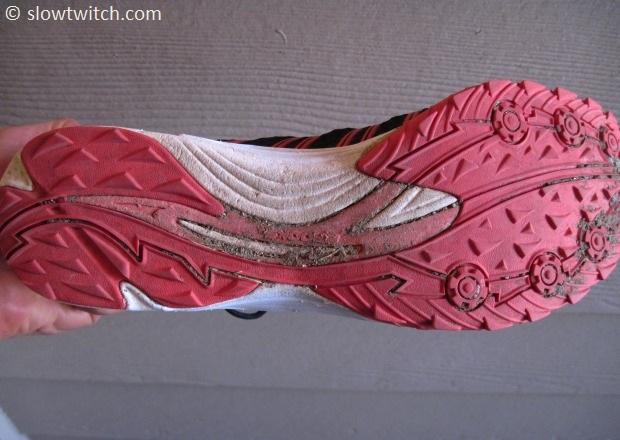
While the narrow shape certainly cuts down on weight, it results in a completely different feel than the wide, flat, and open Vivos. As the name suggests, Vivobarefoot shoes feel a lot like actually being barefoot.
Note on weight and durability
If you look at early reviews of Vivobarefoot shoes, they got criticized for durability – or lack thereof. Who wants to spend $100 on a pair of shoes that’s not going to last?
I’ve been using both pairs of Vivo shoes for four and a half months as of this writing, and both still look to be in very good condition. There are no cuts, no tread separation, and nothing to speak of other than dirt.
My guess is that Vivo responded to the durability claims by adding some weight and stronger material. As a result, these shoes might not be as light as you’re expecting for such a minimal shoe – the Aqua Lite comes in around 7 ounces, and the Breatho is 9.25 ounces. While both are still light weight in the grand scheme, they are definitely not the lightest shoes in the world. If you are looking for a racing shoe for your next open mile on the track, this likely is not the shoe for you (nor is that what they’re necessarily intended for).
I think these shoes are great for two general sets of customers:
1) Those who are already convinced that they want to run 100 mile races in minimal shoes.
2) Those who are looking to take a step closer to minimal, perhaps even if only for daily wear.
Shoe Specs:
Aqua Lite
No-ramp sole (zero heel-to-toe offset)
3mm sole + 3mm insole = 6mm total thickness
No posting or support
MSRP $115
Weight 7.1 oz
Breatho Trail
No-ramp sole (zero heel-to-toe offset)
2.5mm sole + 4.5mm tread + 3mm insole = 10mm total thickness
No posting or support
MSRP $95
Weight 9.25 oz (size 9)
All images © Greg Kopecky / slowtwitch.com



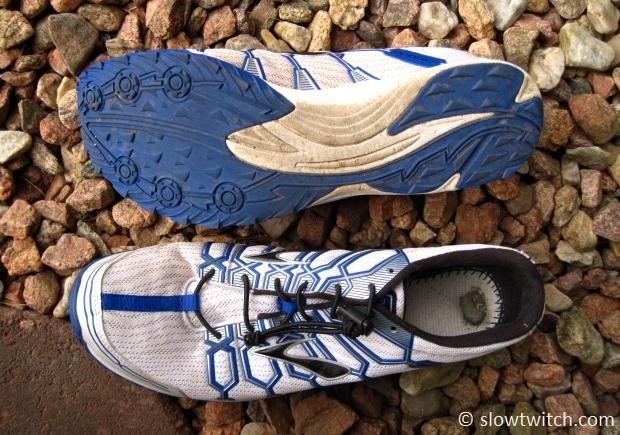
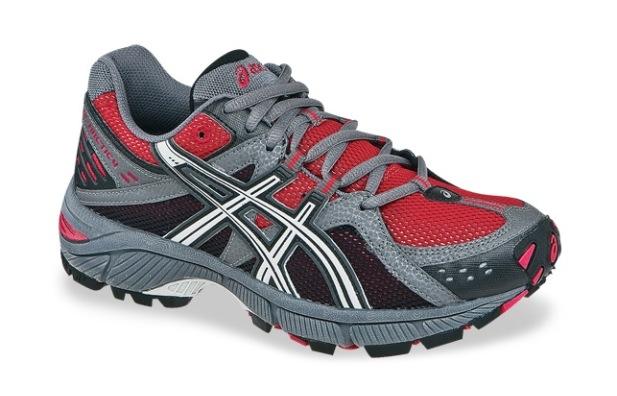
Start the discussion at slowtwitch.northend.network